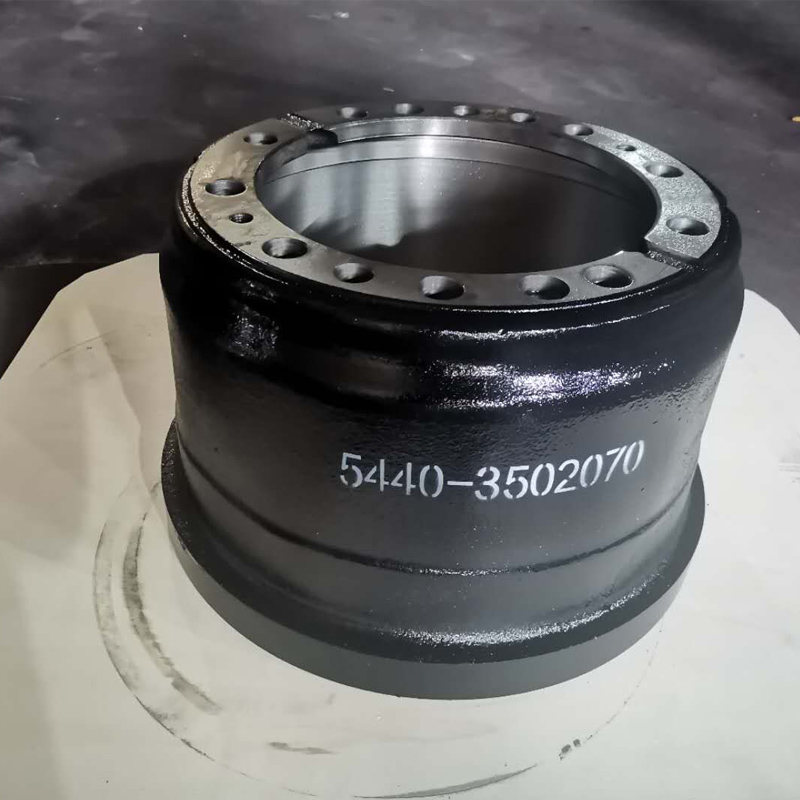Nov . 12, 2024 20:56 Back to list
aluminum brake drum
The Evolution and Benefits of Aluminum Brake Drums
Brake drums are critical components in the braking systems of many vehicles, providing the necessary friction to slow down or stop the vehicle. Traditionally, brake drums have been made from cast iron due to its durability and ability to handle high temperatures. However, the automotive industry has been witnessing a significant shift towards the use of aluminum in brake drum manufacturing. This article explores the evolution of aluminum brake drums, their benefits, and their impact on vehicle performance and sustainability.
The Shift to Aluminum
The use of aluminum in various automotive components has been increasing due to its favorable properties. Aluminum is notably lighter than cast iron, making it an appealing option for manufacturers looking to reduce the overall weight of vehicles. Lighter vehicles not only enhance fuel efficiency but also improve handling and performance. The transition from cast iron to aluminum brake drums is a prime example of this trend.
Innovations in aluminum alloy technology have further facilitated this shift. Modern aluminum alloys can withstand the intense friction and heat generated during braking, providing a solution that rivals the durability of traditional materials. As manufacturers continue to refine these alloys, aluminum brake drums are becoming increasingly reliable and capable of meeting the performance standards expected in today’s vehicles.
Advantages of Aluminum Brake Drums
One of the primary advantages of aluminum brake drums is their lightweight nature. The reduction in weight contributes to overall vehicle efficiency, allowing automotive manufacturers to create lighter cars that consume less fuel. This is particularly important in an era where environmental concerns and fuel economy are at the forefront of automotive design.
aluminum brake drum

Additionally, aluminum brake drums offer excellent thermal conductivity. This property facilitates better heat dissipation during braking, which can lead to improved braking performance and reduced brake fade—a condition that can occur when brakes overheat and lose effectiveness. Enhanced heat dissipation also contributes to the longevity of the braking system, reducing the need for frequent replacements.
Another significant benefit of aluminum is its resistance to corrosion. Unlike cast iron, which can rust and deteriorate over time, aluminum maintains its integrity in various environmental conditions. This characteristic not only extends the lifespan of the brake drum but also lowers maintenance costs for vehicle owners. The longevity and reduced need for replacements translate into significant cost savings over the vehicle’s lifecycle.
Environmental Impact
The shift towards aluminum brake drums also aligns with the automotive industry’s emphasis on sustainability. Aluminum is highly recyclable, and utilizing recycled aluminum significantly reduces energy consumption compared to producing new aluminum from ore. As the demand for more sustainable manufacturing practices grows, many automotive manufacturers are likely to adopt aluminum brake drums as part of their commitment to reducing their carbon footprint.
Moreover, lighter vehicles contribute to lower greenhouse gas emissions. By decreasing the weight of the vehicle through the use of aluminum, manufacturers can achieve better fuel economy, leading to lesser carbon emissions over the vehicle’s life. This is particularly relevant as countries around the world implement stricter emissions regulations.
Conclusion
The transition from traditional cast iron to aluminum brake drums represents a significant advancement in automotive technology. The benefits of lighter weight, improved thermal management, corrosion resistance, and environmental sustainability make aluminum a compelling choice for brake drum manufacturing. As the automotive industry continues to evolve, we can expect to see more innovations that leverage the advantages of aluminum, ultimately leading to better performance, increased safety, and a reduced environmental impact. The future of automotive engineering seems bright with aluminum paving the way for smarter, greener, and more efficient vehicles.
-
Scania Brake Drums: OEM Quality for Optimal Safety & Durability
NewsAug.16,2025
-
R.V.I: Advanced Remote Visual Inspection for Precision
NewsAug.15,2025
-
Discover HYUNDA: Innovative Vehicles, Equipment & Solutions
NewsAug.14,2025
-
R.V.I: Unlock Advanced Insights & Real-time Performance
NewsAug.13,2025
-
Kamaz Brake Drum: Durable & Reliable for Heavy Duty Trucks
NewsAug.12,2025
-
Heavy Duty Iveco Brake Drum - Premium Quality & Safety
NewsAug.11,2025
